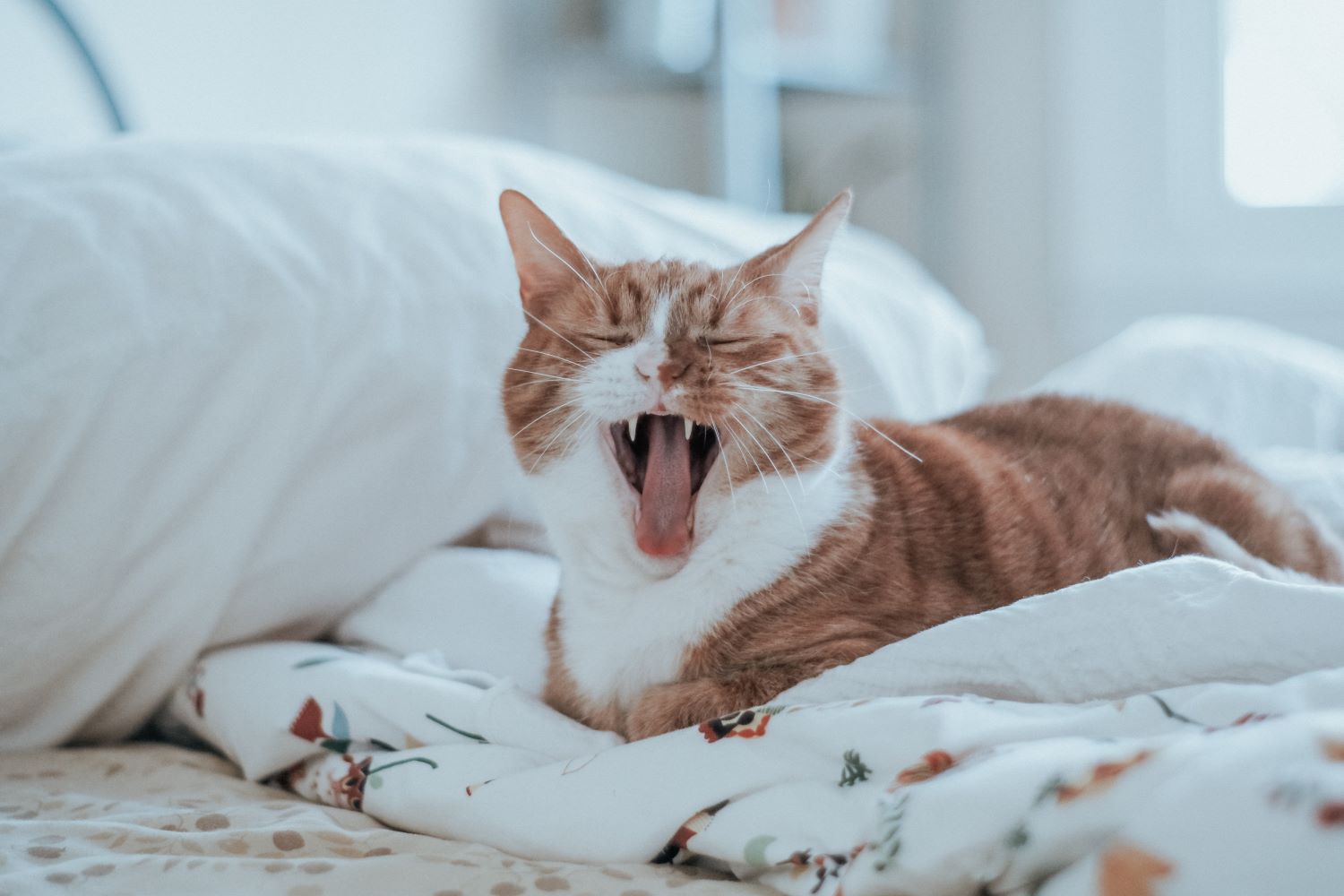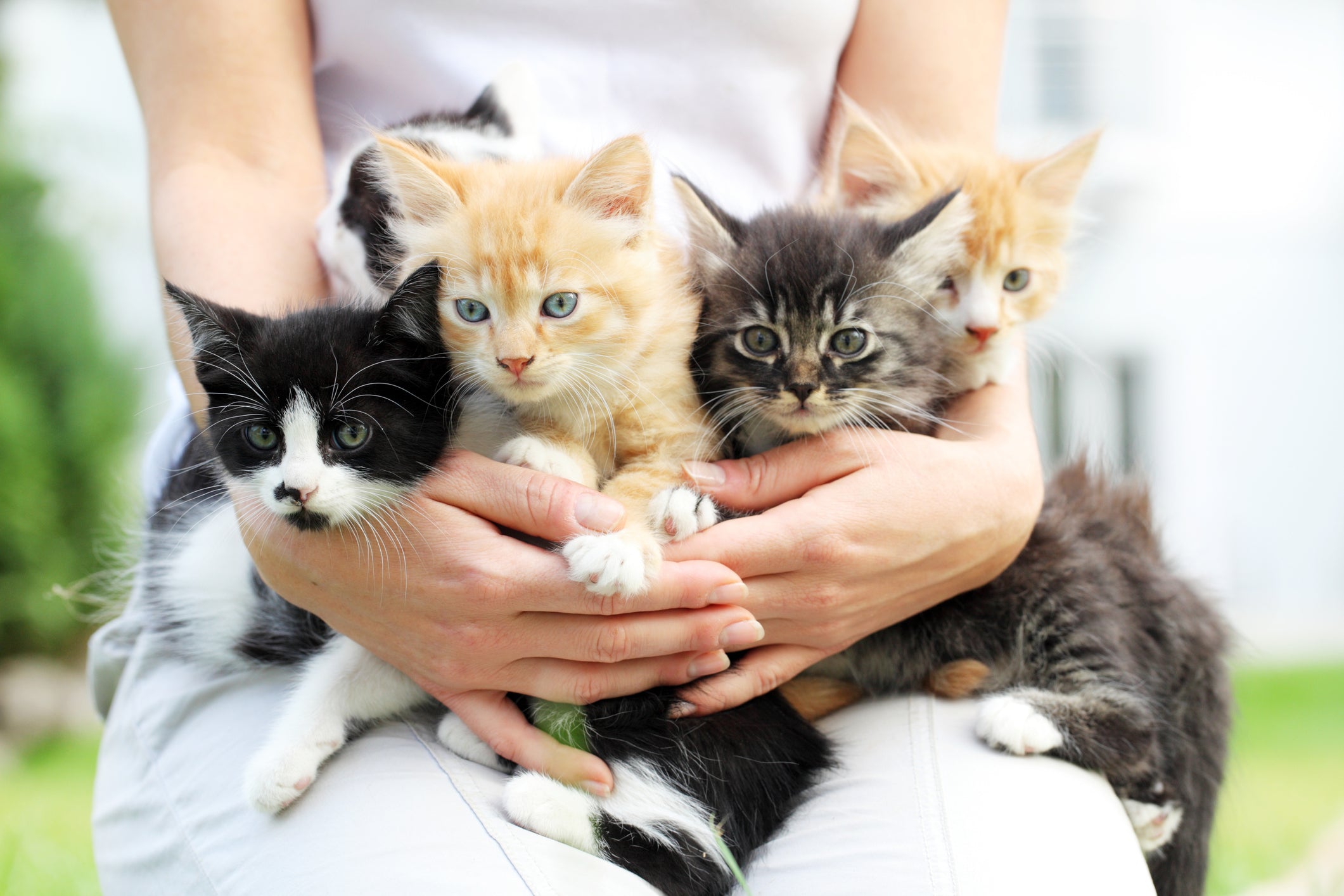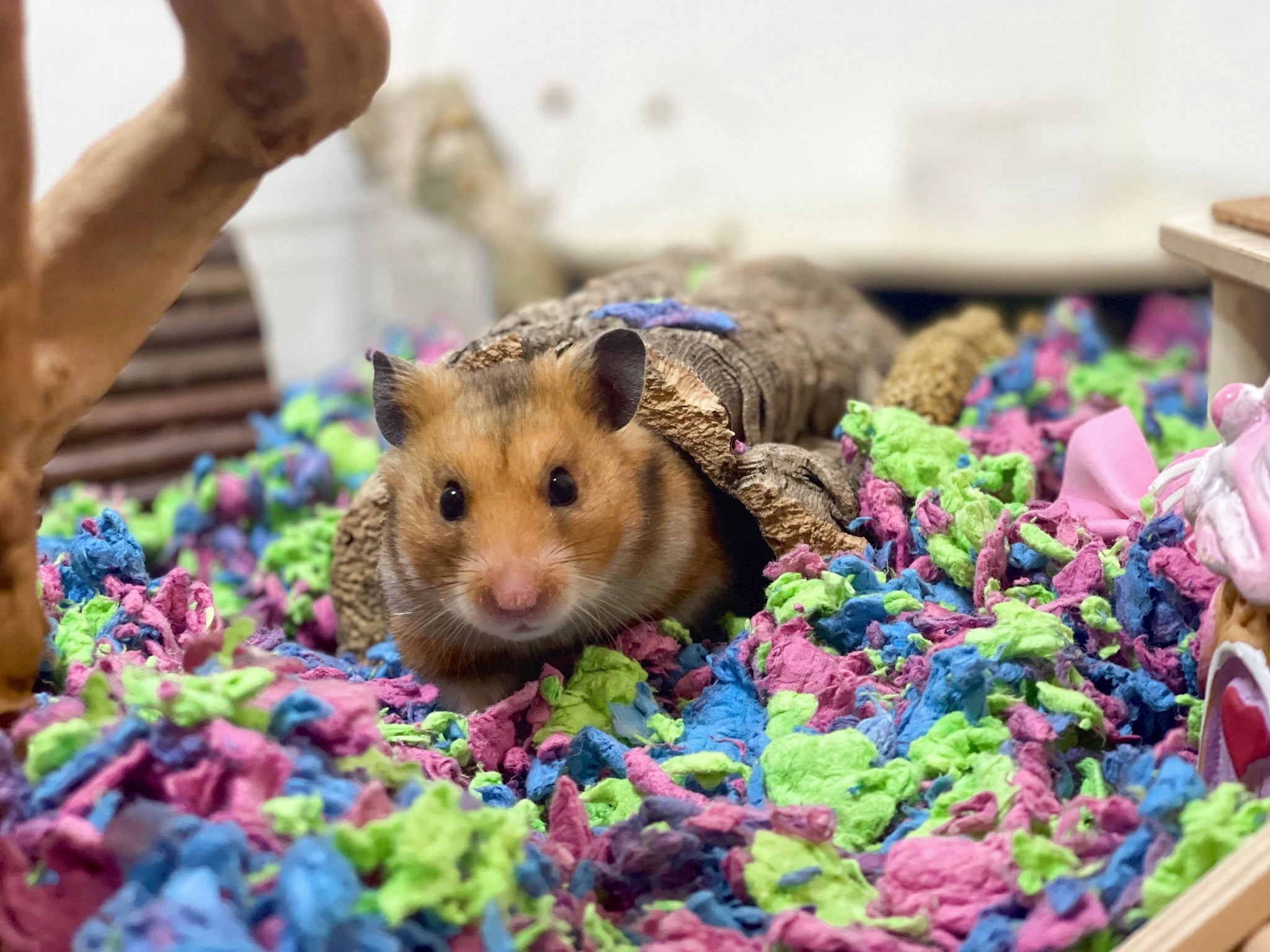
Dental Disease: How to Keep your Cat's Teeth Happy and Healthy
February is National Pet Dental Month and according to the American Veterinary Dental Society (AVDS), 70% of cats and 80% of dogs over the age of three already have dental disease, making it the number one health issue in pets. Unfortunately, lack of good oral hygiene in cats doesn’t just lead to bad kitty breath, it can lead to tooth loss, painful tooth root abscesses, difficulty eating, and even kidney and heart problems if left untreated.
How Does Dental Disease Occur in Cats?
Just like with people, dental disease occurs in pets when food, saliva, and bacteria combine and form plaque. If the plaque is not removed by brushing it mineralizes and becomes tartar. Tartar accumulation promotes bacterial infections below the gum line, which results in gum recession and gum disease and destruction of the tooth’s support structures which can cause tooth loss. Left untreated, bacteria can enter the bloodstream and spread to vital organs, like the kidneys, liver, or heart.
How Do You Know if Your Cat Has Dental Disease?
Some of the signs that your cat may have dental disease include unexplained weight loss, trouble eating or decreased appetite, drooling, swollen or wet face. It is important to realize that these signs and symptoms are not specific to dental disease and may be seen in other diseases. The key is to be observant and notify your veterinarian immediately if you notice any of these symptoms or have other health concerns. I also recommend checking your cat’s teeth regularly as well. Just gently lift their lips to check for tartar or red swollen gums. Don’t forget to take your cat in to your veterinarian at least once a year, twice a year if they are over 7 years. Regular veterinary visits are the best way to make sure your cat is not suffering from dental disease.
How is Dental Disease Diagnosed?
Dental disease in cats is diagnosed by an examination from your veterinarian. Your veterinarian may order dental X-rays to determine the severity of the dental disease.

How is Dental Disease in Cats Treated?
If your cat already has dental disease a complete dental cleaning by your veterinarian is necessary. This involves an evaluation of the oral cavity and cleaning not only the surface of the teeth but getting under the gumline where the majority of bacteria and tartar are found.
After the teeth are cleaned, they are polished to smooth the roughened surfaces that were created by the cleaning. Lastly, the entire mouth is checked again, and dental x-rays will likely be used to assess the extent of the dental disease and the need for any tooth extractions or additional work. The best way to prevent dental disease is to brush your cat’s teeth regularly with cat toothpaste. Non-anesthetic dentals but these are not recommended because they do not get to the root of the problem, they clean only the surface of the teeth (which is cosmetic) and are usually not able to do subgingival cleaning and definitely cannot take x-rays or evaluate each tooth.

How Can You Prevent Dental Disease?
The goal is to prevent dental disease and the best way to do this is by brushing your cat’s teeth. Ideally, you want to start brushing your cat’s teeth when they are young. Pets should have their teeth brushed daily or at least a few times a week. It is important to use pet-safe toothpaste. These do not bubble or foam and they do not have to be rinsed out. Best of all they come in exciting flavors like chicken, beef, tuna, cheese, and seafood. Yum, right?
Brushing is easier you might think. I recommend you start with your fingers, put the pet-safe toothpaste on them, let your kitty lick it off, and then hold their mouth and slowly put your finger in and rub the sides of their teeth. Try doing this for a few days to get them used to it, then try a finger brush or small cat toothbrush.
While nothing beats regular brushing, oral wipes, dental diets, and dental treats can help reduce the bacteria and plaque that lead to tartar formation.
No matter what you choose, be consistent and see your veterinarian regularly for check-ups. Pets should have their teeth checked at least once a year and if you notice your pet has bad breath, trouble eating, excessive drooling, or red inflamed gums call your veterinarian to schedule an appointment right away. Remember early diagnosis and treatment are the best defense against serious dental disease.








